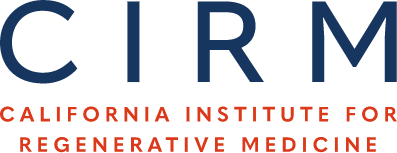Ensuring the safety of cell therapy: a quality control pipeline for cell purification and validation
Grant Award Details
Grant Type:
Grant Number:
TR1-01250
Investigator(s):
Collaborative Funder:
Human Stem Cell Use:
Award Value:
$5,830,771
Status:
Closed
Progress Reports
Reporting Period:
Year 1
Reporting Period:
Year 2
Reporting Period:
Year 3
Reporting Period:
NCE
Grant Application Details
Application Title:
Ensuring the safety of cell therapy: a quality control pipeline for cell purification and validation
Public Abstract:
The clinical application of cell replacement therapy in the US is dependent on the FDA's approval, and the primary objective of the FDA is to protect patients from unsafe drugs and procedures. The FDA has a specific mandate for human gene and cell therapy and since the unexpected deaths in early trials of gene therapy trials the bar for safety in these areas is unusually high.
This is a summary of the key findings from the FDA's report on human embryonic stem cell therapy (April 2008): "From the perspective of toxicology, the proliferative potential of undifferentiated human embryonic and embryonic germ cells evokes the greatest level of concern. A characteristic of hESCs is their capacity to generate teratomas when transplanted into immunologically incompetent strains of mice. Undifferentiated hESCs are not considered as suitable for transplantation due to the risk of unregulated growth. Before clinical trials are begun in humans, the issue of unregulated growth potential and its relationship to stem cell differentiation must be evaluated".
In order to overcome the concerns about the safety of pluripotent stem cell therapy, we have designed a pipeline of quality control measures that can be applied to any cell type that is being considered for Investigational New Drug (IND) approval by the FDA. The technologies that we will develop under this award will allow rigorous selection and characterization of cells before they are tested as transplants. By reducing the possibility that stem cell therapies will be toxic or cause cancer in patients, we will remove the major barriers to advancement of these therapies to the clinic.
This is a summary of the key findings from the FDA's report on human embryonic stem cell therapy (April 2008): "From the perspective of toxicology, the proliferative potential of undifferentiated human embryonic and embryonic germ cells evokes the greatest level of concern. A characteristic of hESCs is their capacity to generate teratomas when transplanted into immunologically incompetent strains of mice. Undifferentiated hESCs are not considered as suitable for transplantation due to the risk of unregulated growth. Before clinical trials are begun in humans, the issue of unregulated growth potential and its relationship to stem cell differentiation must be evaluated".
In order to overcome the concerns about the safety of pluripotent stem cell therapy, we have designed a pipeline of quality control measures that can be applied to any cell type that is being considered for Investigational New Drug (IND) approval by the FDA. The technologies that we will develop under this award will allow rigorous selection and characterization of cells before they are tested as transplants. By reducing the possibility that stem cell therapies will be toxic or cause cancer in patients, we will remove the major barriers to advancement of these therapies to the clinic.
Statement of Benefit to California:
Californians are a large and diverse population that poses unique challenges for the future of medical care. Fortunately, California has a tradition of taking the lead in technology and medical breakthroughs and following through from the first idea to the final product. Almost 20,000 Californians await organ transplants, and more than a million suffer from progressive degenerative diseases and injuries such as Alzheimer disease, Parkinson’s disease, nerve-muscle disease such as amyotrophic lateral sclerosis (ALS) and muscular dystrophy, liver disease, diabetes, and spinal cord injury. The possibility of applying cell replacement therapy to these problems could drastically improve the outlook for treatment for the victims. A major goal for California's supporters of stem cell research is development of stem cell-based products that have medical use, and the mandate for the research community is to provide the best possible fundamental information to help guide clinical applications to make these cells as safe as is possible for cell therapy, by ensuring that they retain normal, noncancerous qualities.
California scientists have taken the first steps to clinical applications of pluripotent stem cells through their cutting edge research in developing new ways to derive these cells and to differentiate them into cell types that can be used to replace damaged tissues. We propose to take this research to the next step, to prepare the cells for clinical trials. We propose to develop a comprehensive pipeline of quality control technologies that will ensure the safety and purity of cells used first for preclinical testing and later for obtaining IND approval from the FDA for initiating human trials. These technologies can be used for any cell therapy, and will considerably reduce the barriers to development of safe, effective new treatments for incurable disease. This will have a positive effect on the health care of all Californians, reduce the cost of development of cell therapies, and create new opportunities for jobs and industry in the state.
Publications
- Neuro Oncol (2010): A 3-dimensional extracellular matrix as a delivery system for the transplantation of glioma-targeting neural stem/progenitor cells. (PubMed: 20156807)
- Genomics (2014): Application of a low cost array-based technique – TAB-Array – for quantifying and mapping both 5mC and 5hmC at single base resolution in human pluripotent stem cells. (PubMed: 25179373)
- Assessment of human pluripotent stem cells with PluriTest (PubMed: 23658970)
- Methods Mol Biol (2011): Basic approaches to gene expression analysis of stem cells by microarrays. (PubMed: 21822882)
- Nat Methods (2011): A bioinformatic assay for pluripotency in human cells. (PubMed: 21378979)
- Development (2013): BMP4-directed trophoblast differentiation of human embryonic stem cells is mediated through a DeltaNp63+ cytotrophoblast stem cell state. (PubMed: 24004950)
- Cell Stem Cell (2010): A call to standardize teratoma assays used to define human pluripotent cell lines. (PubMed: 20452314)
- Cell Stem Cell (2011): A Call for Standardized Naming and Reporting of Human ESC and iPSC Lines. (PubMed: 21474098)
- Stem Cells Dev (2011): Chromatin Insulator Elements Block Transgene Silencing in Engineered hESC Lines at a Defined Chromosome 13 Locus. (PubMed: 21699412)
- Sci Rep (2013): Deriving dopaminergic neurons for clinical use. A practical approach. (PubMed: 23492920)
- J Cell Biochem (2010): DNA methylation in embryonic stem cells. (PubMed: 19899110)
- Epigenomics (2015): DNA methylation fingerprint of neuroblastoma reveals new biological and clinical insights. (PubMed: 26067621)
- Cell Stem Cell (2011): Dynamic changes in the copy number of pluripotency and cell proliferation genes in human ESCs and iPSCs during reprogramming and time in culture. (PubMed: 21211785)
- Genome Res (2010): Dynamic changes in the human methylome during differentiation. (PubMed: 20133333)
- Genome Res (2015): Dynamic changes in replication timing and gene expression during lineage specification of human pluripotent stem cells. (PubMed: 26055160)
- Stem Cells Transl Med (2015): Enabling consistency in pluripotent stem cell-derived products for research and development and clinical applications through material standards. (PubMed: 25650438)
- Circ Res (2014): Epigenetic regulation of pluripotency and differentiation. (PubMed: 24989490)
- Ann Neurol (2014): Epigenetic therapy for Friedreich ataxia. (PubMed: 25159818)
- EMBO Rep (2012): Equally potent? Does cellular reprogramming justify the abandonment of human embryonic stem cells? (PubMed: 22986548)
- PLoS One (2011): Equivalence of conventionally-derived and parthenote-derived human embryonic stem cells. (PubMed: 21249129)
- Trends Mol Med (2012): Ethnically diverse pluripotent stem cells for drug development. (PubMed: 23142148)
- PLoS One (2011): Evidence That Gene Activation and Silencing during Stem Cell Differentiation Requires a Transcriptionally Paused Intermediate State. (PubMed: 21886766)
- Methods Mol Biol (2011): FISH analysis of human pluripotent stem cells. (PubMed: 21822876)
- Cell Stem Cell (2010): Friedreich’s ataxia induced pluripotent stem cells model intergenerational GAATTC triplet repeat instability. (PubMed: 21040903)
- Nat Biotechnol (2012): Full-length mRNA-Seq from single-cell levels of RNA and individual circulating tumor cells. (PubMed: 22820318)
- Nat Cell Biol (2012): The functions of microRNAs in pluripotency and reprogramming. (PubMed: 23131918)
- Methods Mol Biol (2015): Generation of Induced Pluripotent Stem Cells from Mammalian Endangered Species. (PubMed: 26621593)
- J Biol Chem (2014): Genomic instability in pluripotent stem cells: implications for clinical applications. (PubMed: 24362040)
- Tissue Eng Part A (2014): A global assessment of stem cell engineering. (PubMed: 24428577)
- Sci Rep (2015): Glycosyltransferase ST6GAL1 contributes to the regulation of pluripotency in human pluripotent stem cells. (PubMed: 26304831)
- Proc Natl Acad Sci U S A (2015): HDAC inhibition imparts beneficial transgenerational effects in Huntington’s disease mice via altered DNA and histone methylation. (PubMed: 25535382)
- PLoS One (2012): Highly parallel genome-wide expression analysis of single mammalian cells. (PubMed: 22347404)
- Stem Cell Reports (2014): Human neural precursor cells promote neurologic recovery in a viral model of multiple sclerosis. (PubMed: 24936469)
- Development (2015): Human stem cells from single blastomeres reveal pathways of embryonic or trophoblast fate specification. (PubMed: 26483210)
- J Stem Cells (2010): Hyaluronan is required for generation of hematopoietic cells during differentiation of human embryonic stem cells. (PubMed: 20861924)
- PLoS One (2015): Increased risk of genetic and epigenetic instability in human embryonic stem cells associated with specific culture conditions. (PubMed: 25714340)
- J Cell Sci (2013): Matched miRNA and mRNA signatures from an hESC-based in vitro model of pancreatic differentiation reveal novel regulatory interactions. (PubMed: 23813959)
- J Invest Dermatol (2013): Melanocytes derived from transgene-free human induced pluripotent stem cells. (PubMed: 23514962)
- Brain (2017): Molecular analyses of neurogenic defects in a human pluripotent stem cell model of fragile X syndrome. (PubMed: 28137726)
- Nature (2014): Network biology: A compass for stem-cell differentiation. (PubMed: 25254472)
- Stem Cell Res Ther (2014): Neural stem cells genetically-modified to express neprilysin reduce pathology in Alzheimer transgenic models. (PubMed: 25022790)
- Stem Cells (2017): New Monoclonal Antibodies to Defined Cell Surface Proteins on Human Pluripotent Stem Cells. (PubMed: 28009074)
- PLoS One (2011): Normal human pluripotent stem cell lines exhibit pervasive mosaic aneuploidy. (PubMed: 21857983)
- Elife (2015): A panel of induced pluripotent stem cells from chimpanzees: a resource for comparative functional genomics. (PubMed: 26102527)
- Nature (2012): Probing sporadic and familial Alzheimer’s disease using induced pluripotent stem cells. (PubMed: 22278060)
- Expert Rev Neurother (2014): Promoting remyelination: utilizing a viral model of demyelination to assess cell-based therapies. (PubMed: 25245576)
- Cell Res (2014): Protein post-translational modifications and regulation of pluripotency in human stem cells. (PubMed: 24217768)
- Cell Stem Cell (2012): Recurrent variations in DNA methylation in human pluripotent stem cells and their differentiated derivatives. (PubMed: 22560082)
- PLoS One (2016): Remyelination Is Correlated with Regulatory T Cell Induction Following Human Embryoid Body-Derived Neural Precursor Cell Transplantation in a Viral Model of Multiple Sclerosis. (PubMed: 27310015)
- Science (2014): Research capacity. Enabling the genomic revolution in Africa. (PubMed: 24948725)
- Zoo Biol (2016): Rewinding the process of mammalian extinction. (PubMed: 27142508)
- Nat Commun (2014): Role of astroglia in Down’s syndrome revealed by patient-derived human-induced pluripotent stem cells. (PubMed: 25034944)
- Cell Res (2011): Specific lectin biomarkers for isolation of human pluripotent stem cells identified through array-based glycomic analysis. (PubMed: 21894191)
- Stem Cells (2017): Spontaneous Single-Copy Loss of TP53 in Human Embryonic Stem Cells Markedly Increases Cell Proliferation and Survival. (PubMed: 27888558)
- Mov Disord (2015): Stem cell reprogramming: basic implications and future perspective for movement disorders. (PubMed: 25546831)
- Expert Opin Biol Ther (2015): The ‘sweet’ spot of cellular pluripotency: protein glycosylation in human pluripotent stem cells and its applications in regenerative medicine. (PubMed: 25736263)
- Cell Stem Cell (2011): Targeted Gene Correction of Laminopathy-Associated LMNA Mutations in Patient-Specific iPSCs. (PubMed: 21596650)
- J Vis Exp (2011): Teratoma Generation in the Testis Capsule. (PubMed: 22158256)
- Bioessays (2016): The tumorigenic potential of pluripotent stem cells: What can we do to minimize it? (PubMed: 27417126)
- Nat Commun (2016): Whole-genome mutational burden analysis of three pluripotency induction methods. (PubMed: 26892726)



